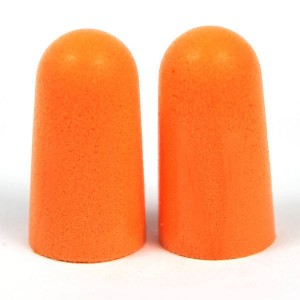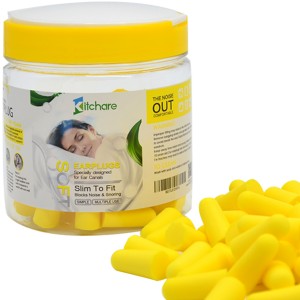With modern people’s busy life and high work pressure, good sleep quality is more and more critical. Many people are deeply affected by noise pollution due to the problem of their living environment, and it is difficult to ensure the quality of sleep, which will affect their daily work and life over time. Choosing to wear noise-cancelling earplugs is simple and easy, making it the choice of most people.
With the development of new materials, PVC foam earplugs and silicone earplugs appeared and quickly became popular in the market. Later, it was found that PVC composites contain toxic substances, which are not suitable for making products that are close to the human body. Long-term wear is easy to cause harm to the human body. The use of this material is completely banned. Silicone earplugs are still used in the market today. Earplugs made of silicone material can be used repeatedly and have a long life. They are mainly used for labor insurance noise-proof earplugs to protect workers’ hearing, or as waterproof earplugs. However, due to their poor softness, long-term wearing of the ear will cause obvious swelling and pain. , not suitable for sleep use. PU material has become the main raw material for domestic and foreign manufacturers to manufacture anti-noise earplugs.
People choose ordinary flexible foam polyethers with different molecular weights, add specific types of catalysts and foam stabilizers, mix them evenly according to a certain mass ratio, mix the preheated TDI into the soft foam polyethers, and pour them into the mold after thorough stirring. Aging is carried out in the process to obtain a polyurethane sponge for making anti-noise earplugs.
Noise-canceling earplugs made of polyurethane foam have numerous advantages.
First of all, because of its good slow rebound characteristics, it can better fit people’s ear canals and play an effective noise reduction role. You can simply do a slow rebound test on the earplugs, squeeze the earplugs hard, and observe the gradual rebound of the earplugs after letting go. It can be expanded and recovered in a short time. In order to achieve a good noise reduction effect and give full play to its slow rebound characteristics, it must be combined with the correct wearing method. Simply inserting the earbuds directly into the ear will not only reduce the comfort, but also will not effectively isolate the sound due to the existence of small gaps. The correct method is to pinch the upper part of the earplugs, pull up the upper ear corners, then insert the earplugs into the ear canal, and press the earplugs until they expand and fit the ear canal. Only in this way can an effective noise reduction effect be achieved.
Second, compared with silicone, earplugs made of polyurethane sponge have better softness and breathability, and are more comfortable to wear. They are suitable for sleeping earplugs for long-term use.
Third, polyurethane sponges are safer to use, harmless in direct contact with the human body, and have little hidden dangers. Another point to pay attention to is that the surface texture of the earplugs will be different due to different material composition ratios and process issues, and earplugs that are sticky to the touch are likely to stick to the skin. Stick the two earbuds tightly together and then separate them for as little time as possible.
To prevent noise hazards, it is the easiest and easiest way to choose professional and safe anti-noise earplugs. It is very important to select the materials for making earplugs. Through the above comparison, the earplugs made of polyurethane sponge have good slow rebound characteristics, good air permeability and softness, high safety, can effectively reduce noise, and are the best choice as anti-noise earplugs.
Post time: Jul-21-2022




